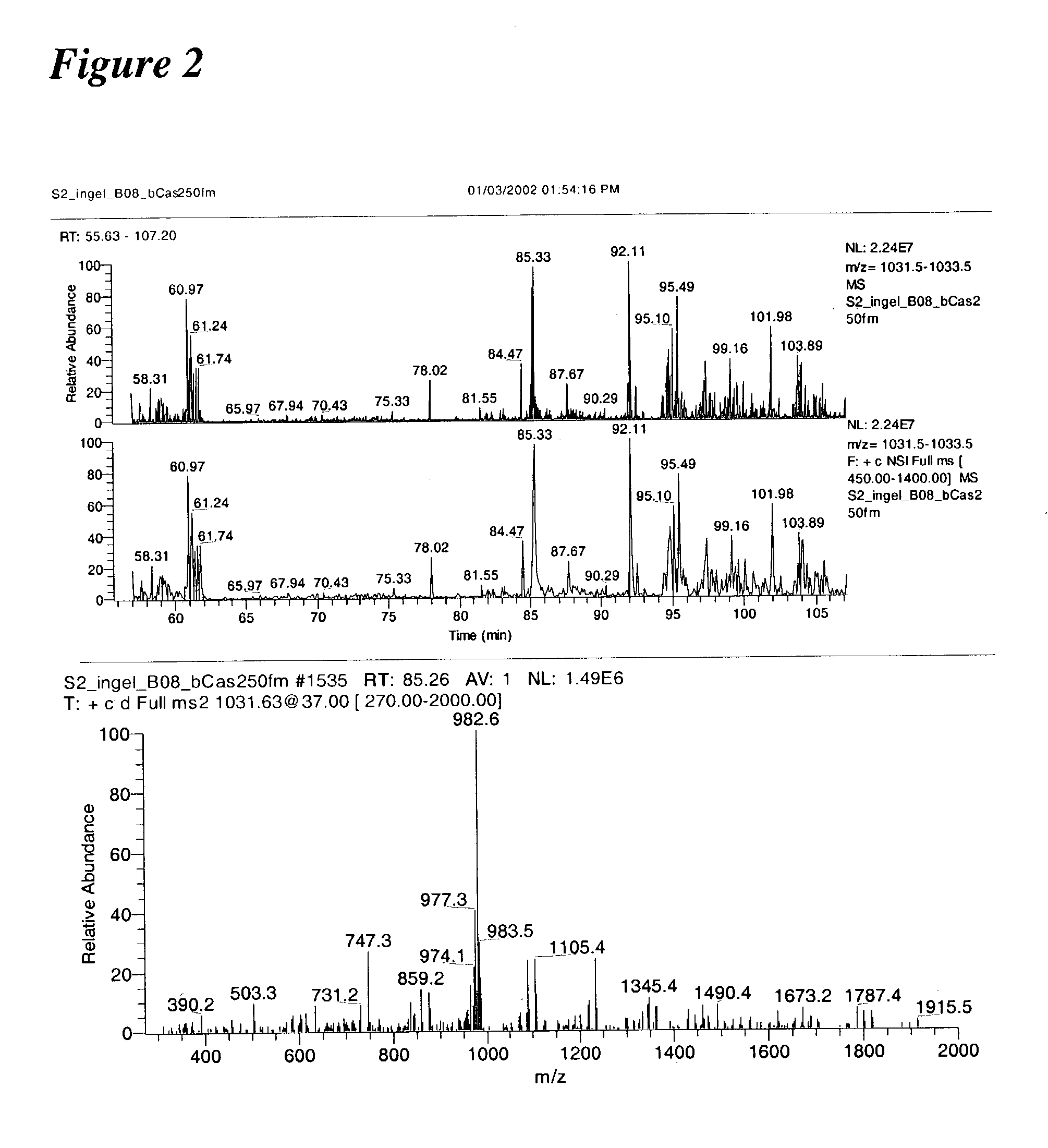Systems and methods for the analysis of protein phosphorylation
a protein and protein phosphorylation technology, applied in the field of system and method for the analysis of protein phosphorylation, can solve the problems of complex cellular proteome, complicated identification of phosphorylation sites on a protein, and difficulty in achieving the effect of reducing the number of phosphorylation sites
- Summary
- Abstract
- Description
- Claims
- Application Information
AI Technical Summary
Problems solved by technology
Method used
Image
Examples
Embodiment Construction
Phosphoproteome Analysis by Mass Spectrometry
[0044] Following the methodology of the present invention, it is now possible to characterize most, if not all, phosphoproteins from a whole cell lysate in a single experiment. Proteins were digested with trypsin and the resulting peptides then converted to methyl esters, enriched for phosphopeptides by immobilized metal affinity chromatography (IMAC) and analyzed by nanoflow HPLC / electrospray ionization mass spectrometry.
[0045] In an initial experiment, B-casein was digested with trypsin and analyzed using the method of the invention. Results of this experiment are shown in FIG. 2.
[0046] More than a 1,000 phosphopeptides were detected when the methodology was applied to the analysis of a whole cell lysate from S. cerevisiae. Sequences, including 383 sites of phosphorylation derived from 216 peptides, were determined. Of these, 60 were singly phosphorylated, 145 doubly phosphorylated, and 11 triply phosphorylated. To validate the approach...
PUM
| Property | Measurement | Unit |
|---|---|---|
| volume | aaaaa | aaaaa |
| volume | aaaaa | aaaaa |
| volumes | aaaaa | aaaaa |
Abstract
Description
Claims
Application Information
 Login to View More
Login to View More - R&D
- Intellectual Property
- Life Sciences
- Materials
- Tech Scout
- Unparalleled Data Quality
- Higher Quality Content
- 60% Fewer Hallucinations
Browse by: Latest US Patents, China's latest patents, Technical Efficacy Thesaurus, Application Domain, Technology Topic, Popular Technical Reports.
© 2025 PatSnap. All rights reserved.Legal|Privacy policy|Modern Slavery Act Transparency Statement|Sitemap|About US| Contact US: help@patsnap.com


